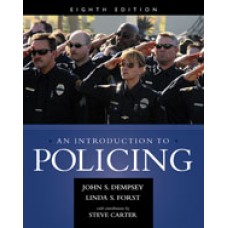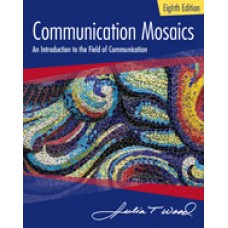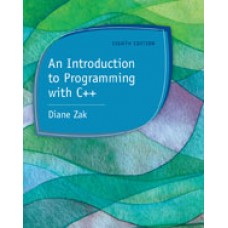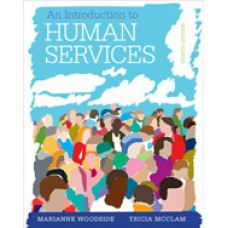Test Bank for An Introduction to Policing, 8th Edition
$35.00 Original price was: $35.00.$26.50Current price is: $26.50.
Test Bank for An Introduction to Policing, 8th Edition
This is completed downloadable of Test Bank for An Introduction to Policing, 8th Edition

Product Details:
- ISBN-10 : 1285862732
- ISBN-13 : 978-1305767430
- Author: John S. Dempsey (Author), Linda S. Forst (Author)
Discover the challenges, excitement and rewards of law enforcement today with AN INTRODUCTION TO POLICING, 8th Edition. Written by law enforcement veterans with extensive experience in all areas of policing, this engaging, comprehensive book blends practical information with pertinent theory. The authors examine today’s most current issues, policing techniques and industry trends, including homeland security, recent terrorism incidents, the controversial Secure Communities Program by DHS, Specialized Policing Responses to individuals with mental illness, advances in policing technology, and more. Readers find the latest practitioner research as well as the most current applications, statistics, court cases and information on law enforcement careers. The book presents extensive examples from small and large police departments throughout the world as well as essays from respected law enforcement practitioners who delve into crucial policing issues and challenges. AN INTRODUCTION TO POLICING, 8th Edition, is an essential read for anyone considering a career in law enforcement today.
Table of Content:
- Part 1: Police History and Organization
- Ch 1: Police History
- Learning Objectives
- Outline
- Introduction
- Early Police
- English Policing: Our Heritage
- American Policing: The Colonial Experience
- American Policing: Eighteenth and Nineteenth Centuries
- American Policing: Twentieth and Twenty-First Centuries
- Summary
- Review Exercises
- End Notes
- Ch 2: Organizing Public Security in the United States
- Learning Objectives
- Outline
- Introduction
- The U.S. Public Security Industry
- Local Law Enforcement
- Law Enforcement in the Era of Reduced Budgets
- State Law Enforcement
- Federal Law Enforcement
- International Police
- Summary
- Review Exercises
- End Notes
- Ch 3: Organizing the Police Department
- Learning Objectives
- Outline
- Introduction
- Organizing the Department: Managerial Concepts
- Alternative Organizational Models and Structures
- Organizing by Personnel
- Organizing by Area
- Organizing by Time
- Organizing by Function or Purpose
- Summary
- Review Exercises
- End Notes
- Part 2: The Personal Side of Policing
- Ch 4: Becoming a Police Officer
- Learning Objectives
- Outline
- Introduction
- Finding Information on Jobs in Policing
- Standards in Police Selection
- The Recruitment Process
- The Job Analysis
- The Selection Process
- The Police Training Process
- Summary
- Review Exercises
- End Notes
- Ch 5: The Police Role and Police Discretion
- Learning Objectives
- Outline
- Introduction
- The Police Role
- Ambiguity of the Police Role
- Goals and Objectives of Policing
- Police Operational Styles
- Police Discretion
- Police Shootings and the Use of Deadly Force
- Summary
- Review Exercises
- End Notes
- Ch 6: Police Culture, Personality, and Stress
- Learning Objectives
- Outline
- Introduction
- The Police Culture or Subculture
- The Police Personality
- Police Stress
- Police Suicide
- Police Danger
- Summary
- Review Exercises
- End Notes
- Ch 7: Minorities in Policing
- Learning Objectives
- Outline
- Introduction
- Discrimination in Policing
- How Did Women and Minorities Strive for Equality?
- White Male Backlash
- Minorities Proving Themselves on the Job
- Minorities in Policing Today
- Challenges Persist for Minorities in Policing
- Summary
- Review Exercises
- End Notes
- Ch 8: Police Ethics and Police Deviance
- Learning Objectives
- Outline
- Introduction
- Ethics and the Police
- The Dilemma of Law versus Order
- Review of the Police
- Police Corruption
- Other Police Misconduct
- Biased-Based Policing
- Police Brutality
- Responses to Police Corruption
- Police Civil and Criminal Liability
- Summary
- Review Exercises
- End Notes
- Part 3: Police Operations
- Ch 9: Patrol Operations
- Learning Objectives
- Outline
- Introduction
- Traditional Methods of Police Work
- Police Patrol Operations
- Evaluating the Effectiveness of Police Work
- Random Routine Patrol: The Kansas City Study
- Rapid Response to Citizens’ 911 Calls
- Patrol Innovations: Working Smarter
- Personnel Deployment
- Allocation of Resources
- Alternative Strategies
- Police Traffic Operations
- Other Police Operational Units
- Summary
- Review Exercises
- End Notes
- Ch 10: Investigations
- Learning Objectives
- Outline
- Introduction
- Retroactive Investigation of past Crimes by Detectives
- Detective Operations
- Alternatives to Retroactive Investigation of past Crimes by Detectives
- Crime Analysis and Information Management
- Proactive Tactics
- Undercover Operations
- Entrapment
- Summary
- Review Exercises
- End Notes
- Ch 11: Police and Their Clients
- Learning Objectives
- Outline
- Introduction
- The Need for Proper Police-Community Relationships
- Human Relations, Public Relations, Community Relations
- Public Opinion and the Police
- Police and Minority Communities
- Police and Special Populations
- Community Crime Prevention Programs
- Police and Business Cooperation
- Summary
- Review Exercises
- End Notes
- Ch 12: Community Policing
- Learning Objectives
- Outline
- Introduction
- Corporate Strategies for Policing
- The Philosophy of Community Policing and Problem-Solving Policing
- Community Policing
- Problem-Solving Policing
- Successful Examples of Community-Oriented Policing
- Community Policing Today
- The Federal Government and Community Policing
- Some Accomplishments of Community Policing
- The Debate Continues on Community Policing
- Homeland Security and the Future of Community Policing
- Summary
- Review Exercises
- End Notes
- Ch 13: Police and the Law
- Learning Objectives
- Outline
- Introduction
- Crime in the United States
- The Police and the U.S. Constitution
- The Police and Arrest
- The Police and Search and Seizure
- The Warrant Requirement and the Search Warrant
- The Police and Custodial Interrogation
- Police Eyewitness Identification Procedures
- Summary
- Review Exercises
- End Notes
- Part 4: Critical Issues in Policing
- Ch 14: Computers, Technology, and Criminalistics in Policing
- Learning Objectives
- Outline
- Introduction
- Computer Technology in Policing
- Fingerprint Technology
- Less-than-Lethal Weapons
- Surveillance Technology
- Advanced Photographic Techniques
- Modern Forensics or Criminalistics
- DNA Profiling
- Biometric Identification
- Videotaping
- Robotics
- Concerns about Technology and Civil Liberties
- Summary
- Review Exercises
- End Notes
- Ch 15: Homeland Security
- Learning Objectives
- Outline
- Introduction
- Homeland Security
- Terrorism
- Methods of Investigating Terrorism
- Post-9/11 Response to Terrorism and Homeland Defense
- Federal Law Enforcement Efforts for Homeland Security
- State and Local Law Enforcement Efforts for Homeland Security
- Security versus Civil Liberties
- Summary
- Review Exercises
- End Notes
- Glossary
- Index
People Also Search:
an introduction to policing
an introduction to policing 8th edition
an introduction to policing 8th edition download scribd
an introduction to policing 8th edition test bank download pdf
an introduction to policing 8th edition pdf free
You may also like…
Test Bank
Test Bank for Communication Mosaics An Introduction to the Field of Communication, 8th Edition












